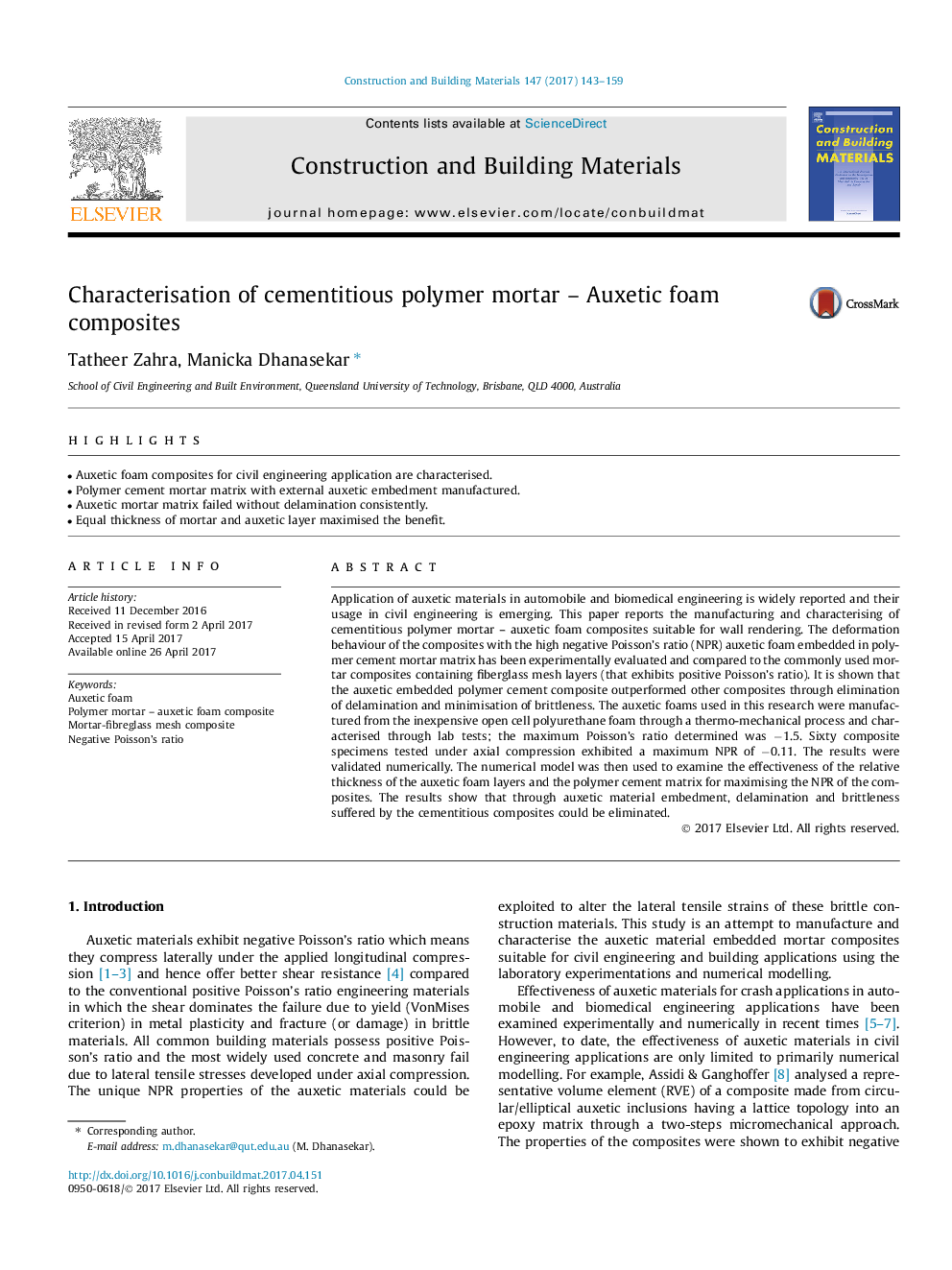| Article ID | Journal | Published Year | Pages | File Type |
|---|---|---|---|---|
| 6480478 | Construction and Building Materials | 2017 | 17 Pages |
â¢Auxetic foam composites for civil engineering application are characterised.â¢Polymer cement mortar matrix with external auxetic embedment manufactured.â¢Auxetic mortar matrix failed without delamination consistently.â¢Equal thickness of mortar and auxetic layer maximised the benefit.
Application of auxetic materials in automobile and biomedical engineering is widely reported and their usage in civil engineering is emerging. This paper reports the manufacturing and characterising of cementitious polymer mortar - auxetic foam composites suitable for wall rendering. The deformation behaviour of the composites with the high negative Poisson's ratio (NPR) auxetic foam embedded in polymer cement mortar matrix has been experimentally evaluated and compared to the commonly used mortar composites containing fiberglass mesh layers (that exhibits positive Poisson's ratio). It is shown that the auxetic embedded polymer cement composite outperformed other composites through elimination of delamination and minimisation of brittleness. The auxetic foams used in this research were manufactured from the inexpensive open cell polyurethane foam through a thermo-mechanical process and characterised through lab tests; the maximum Poisson's ratio determined was â1.5. Sixty composite specimens tested under axial compression exhibited a maximum NPR of â0.11. The results were validated numerically. The numerical model was then used to examine the effectiveness of the relative thickness of the auxetic foam layers and the polymer cement matrix for maximising the NPR of the composites. The results show that through auxetic material embedment, delamination and brittleness suffered by the cementitious composites could be eliminated.
